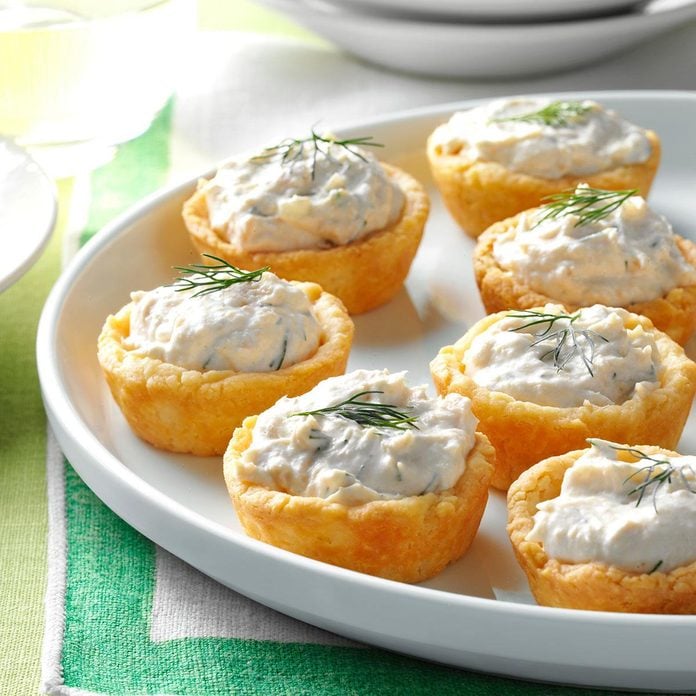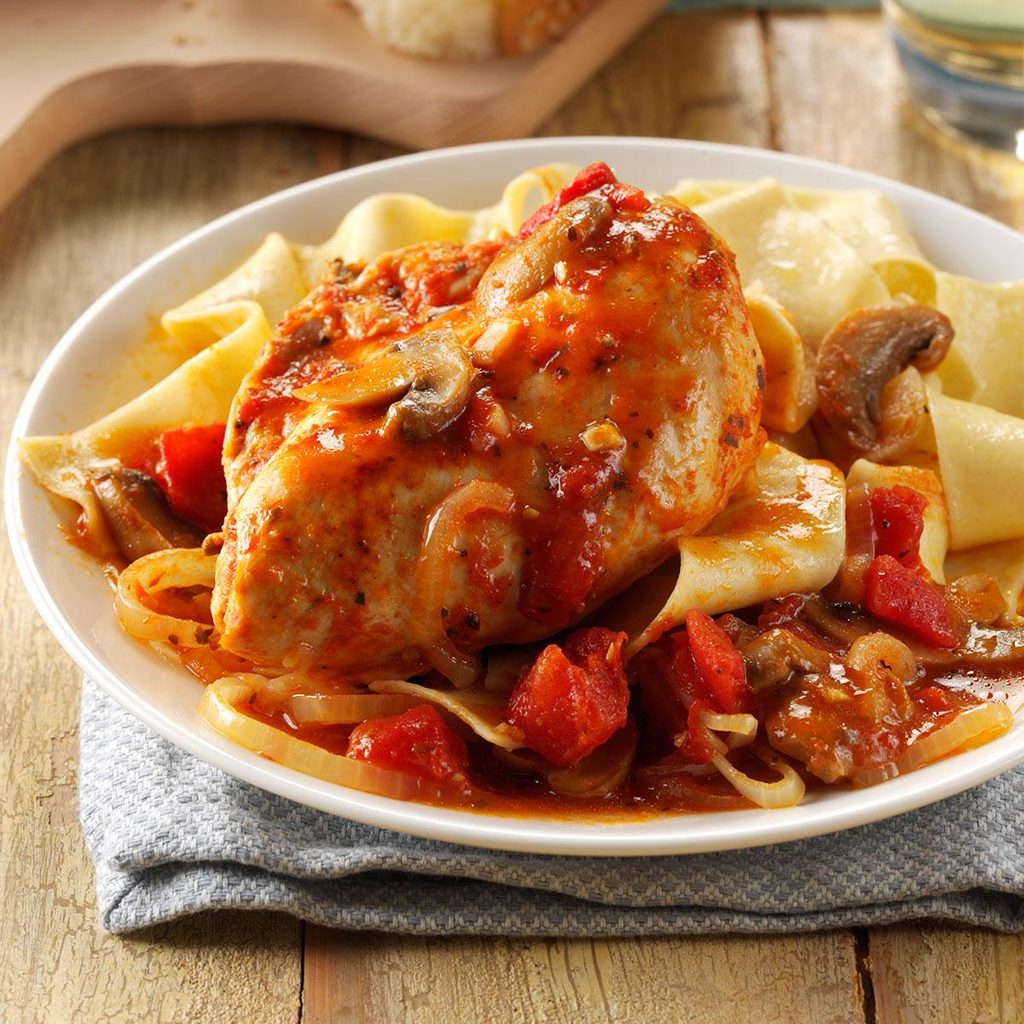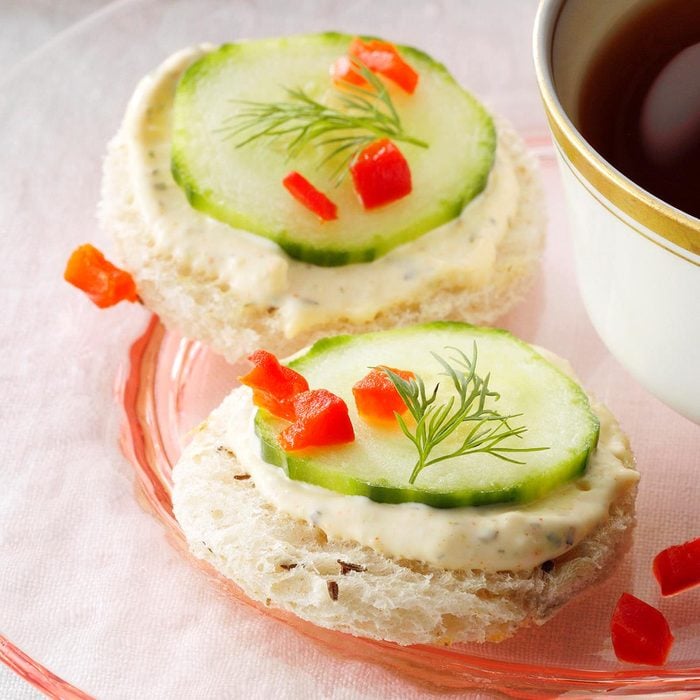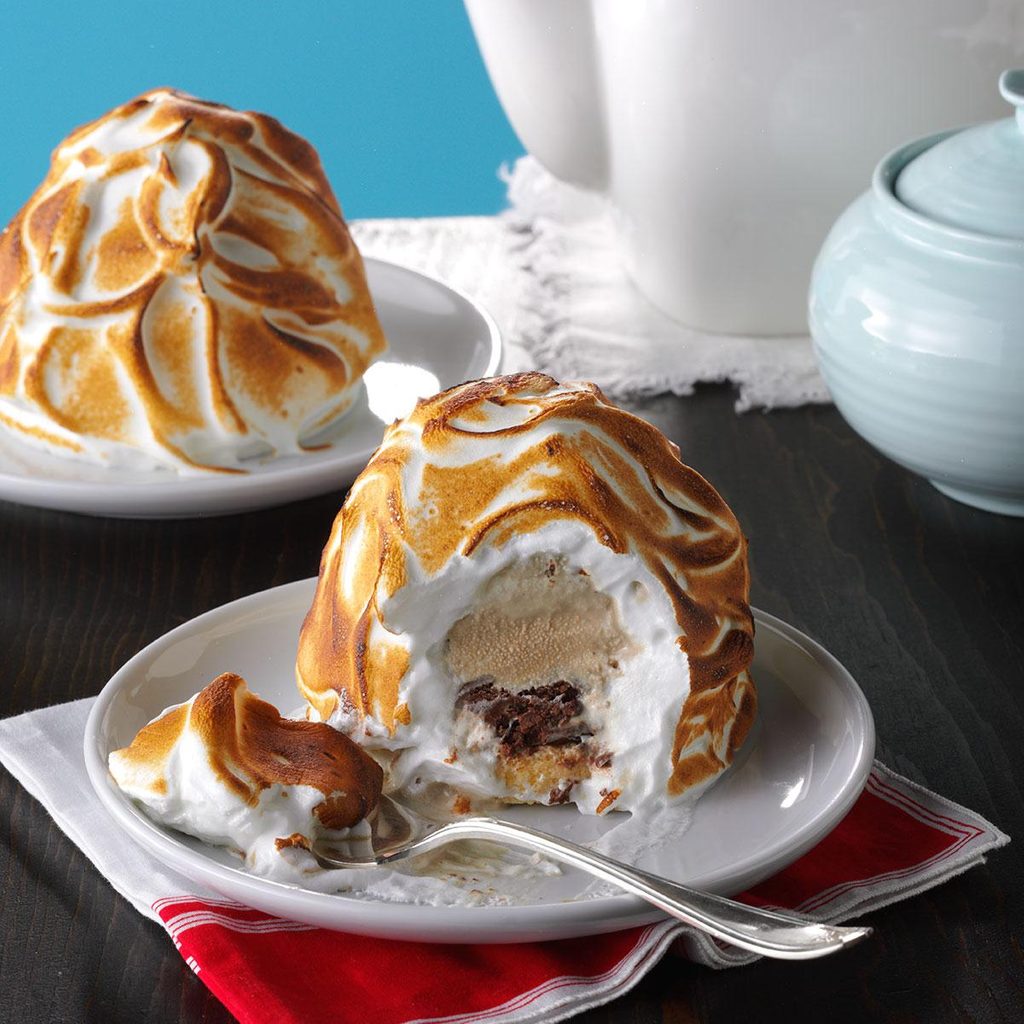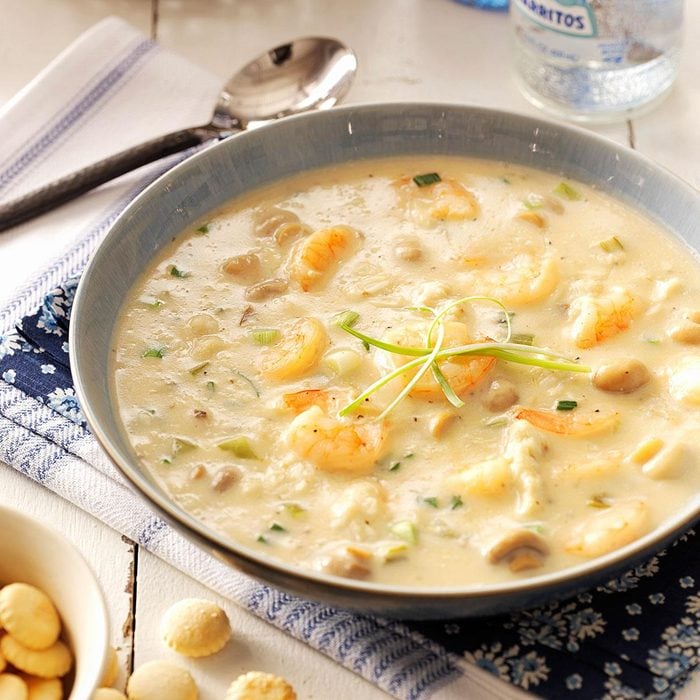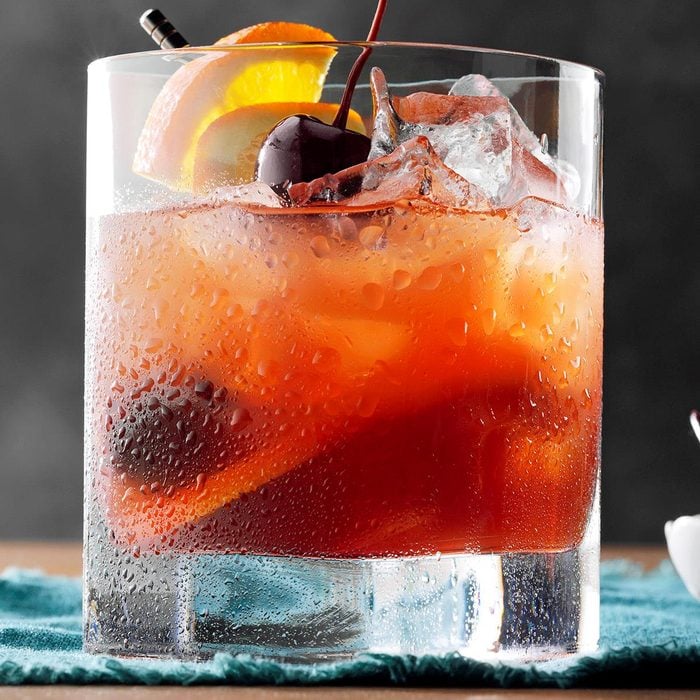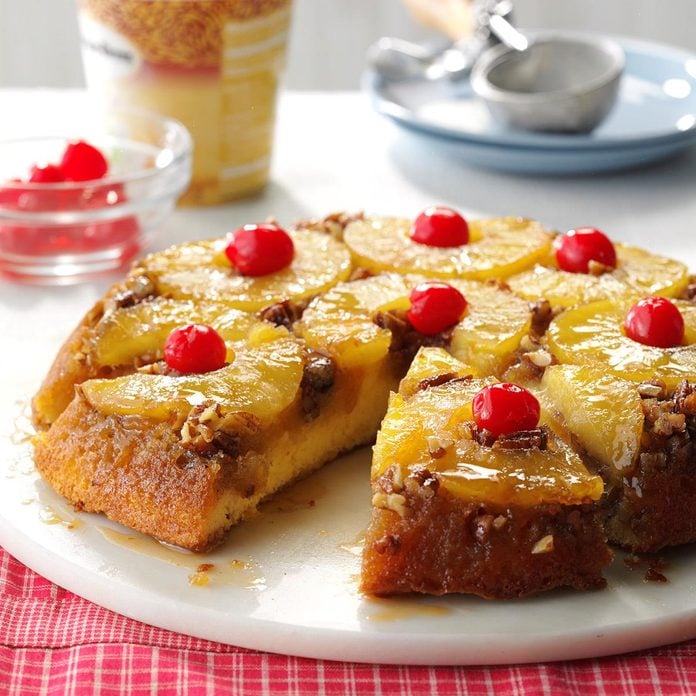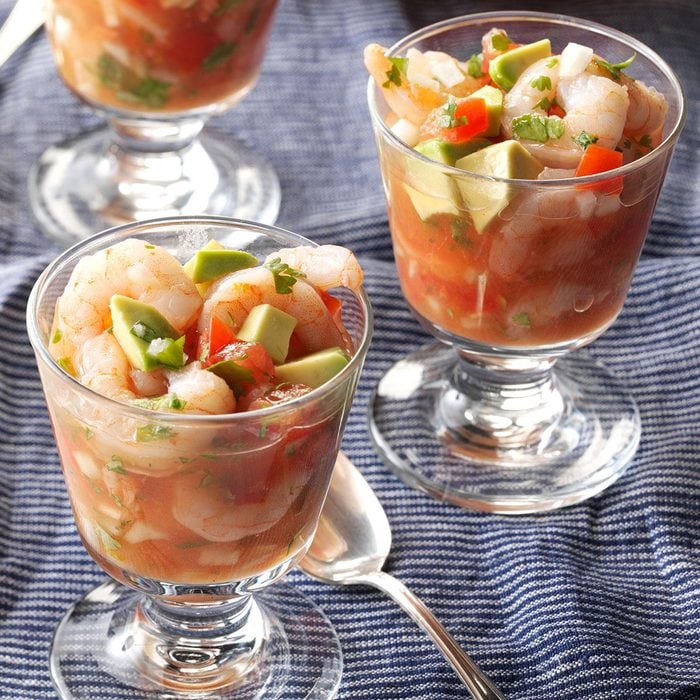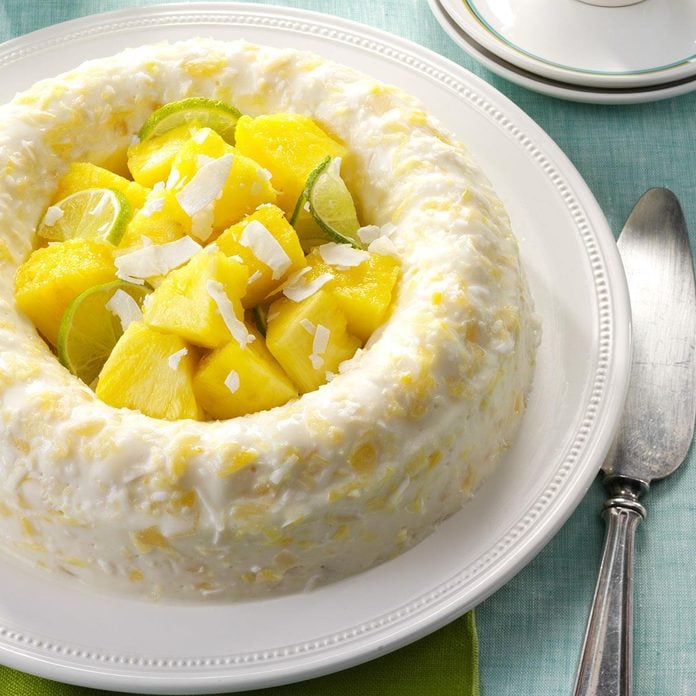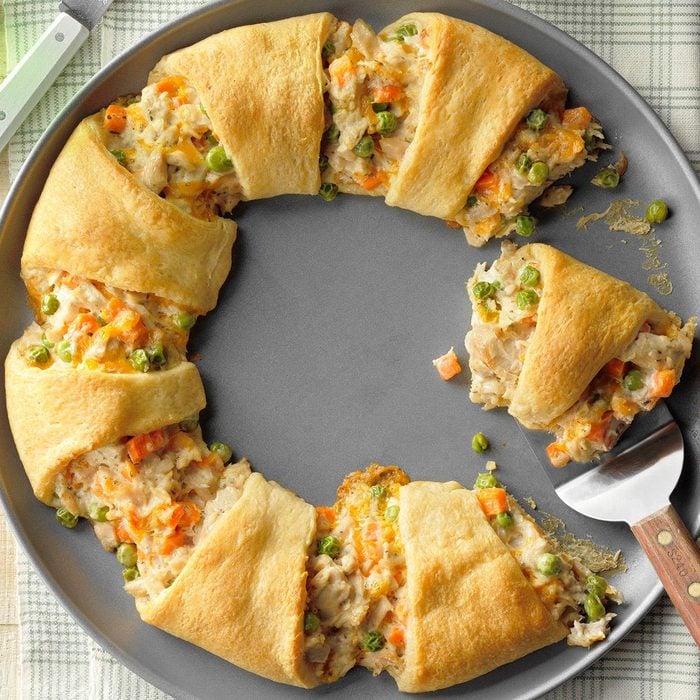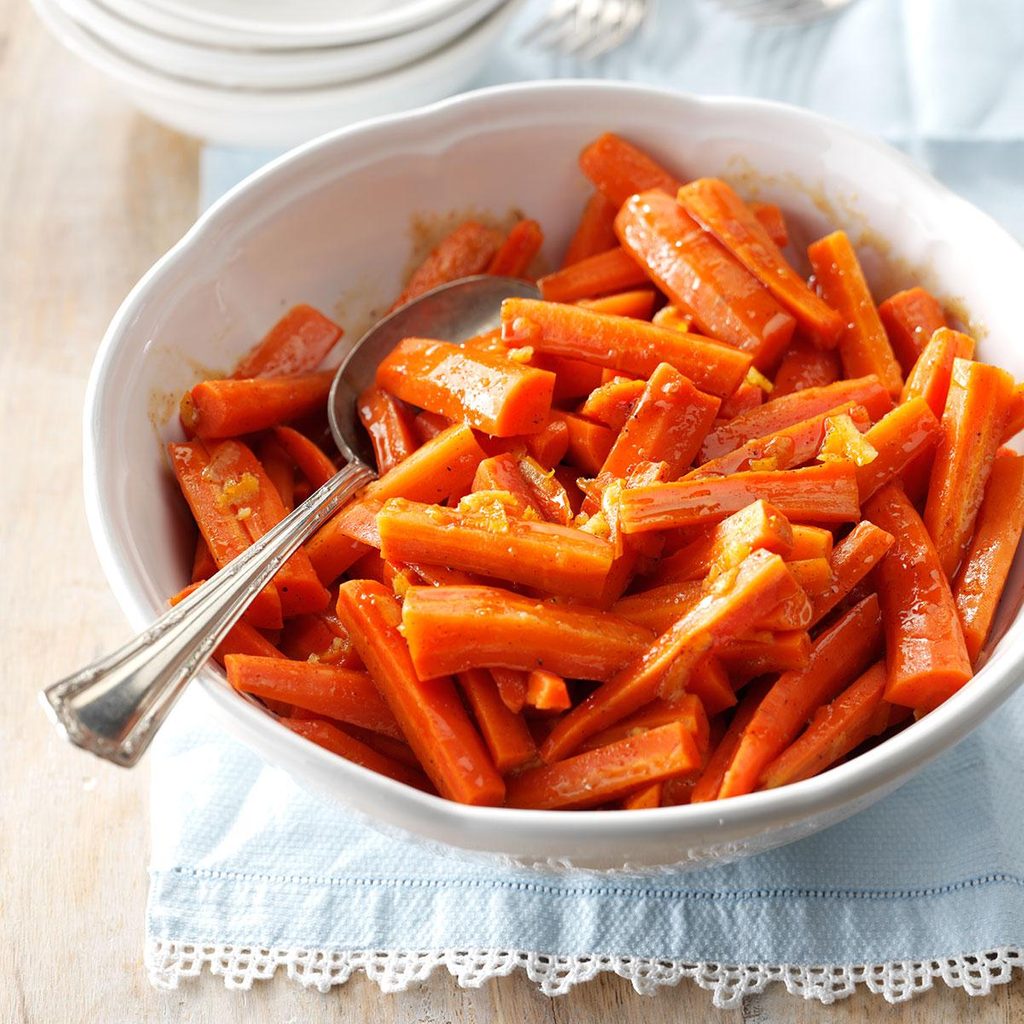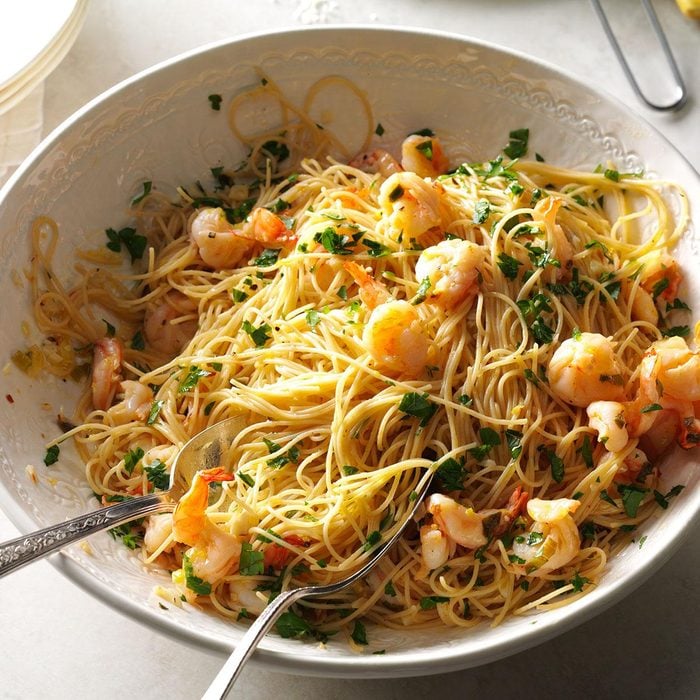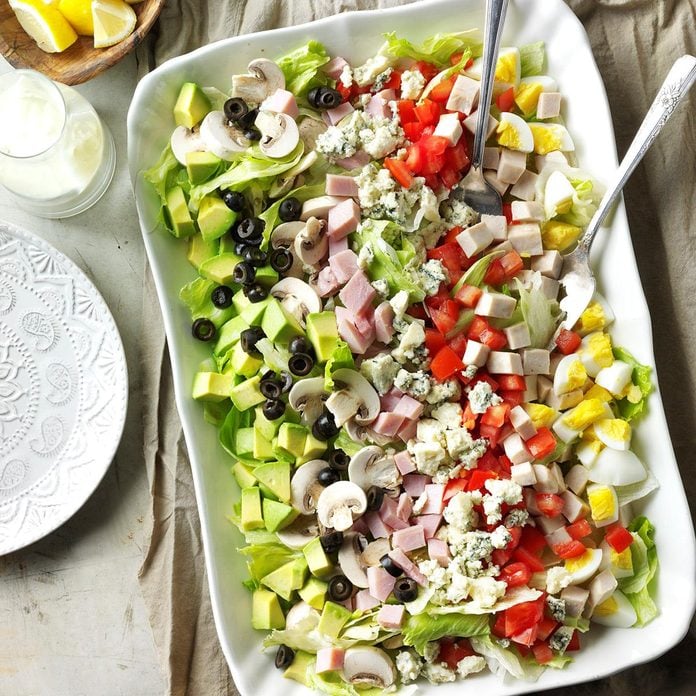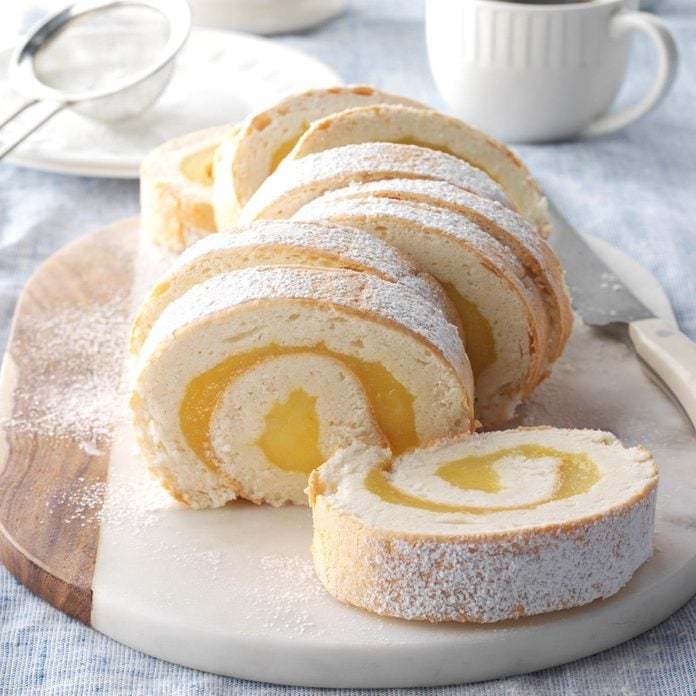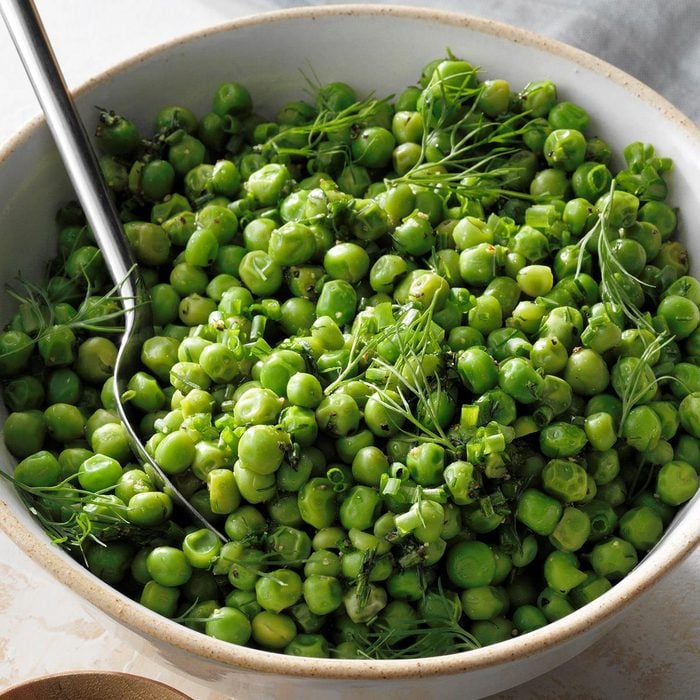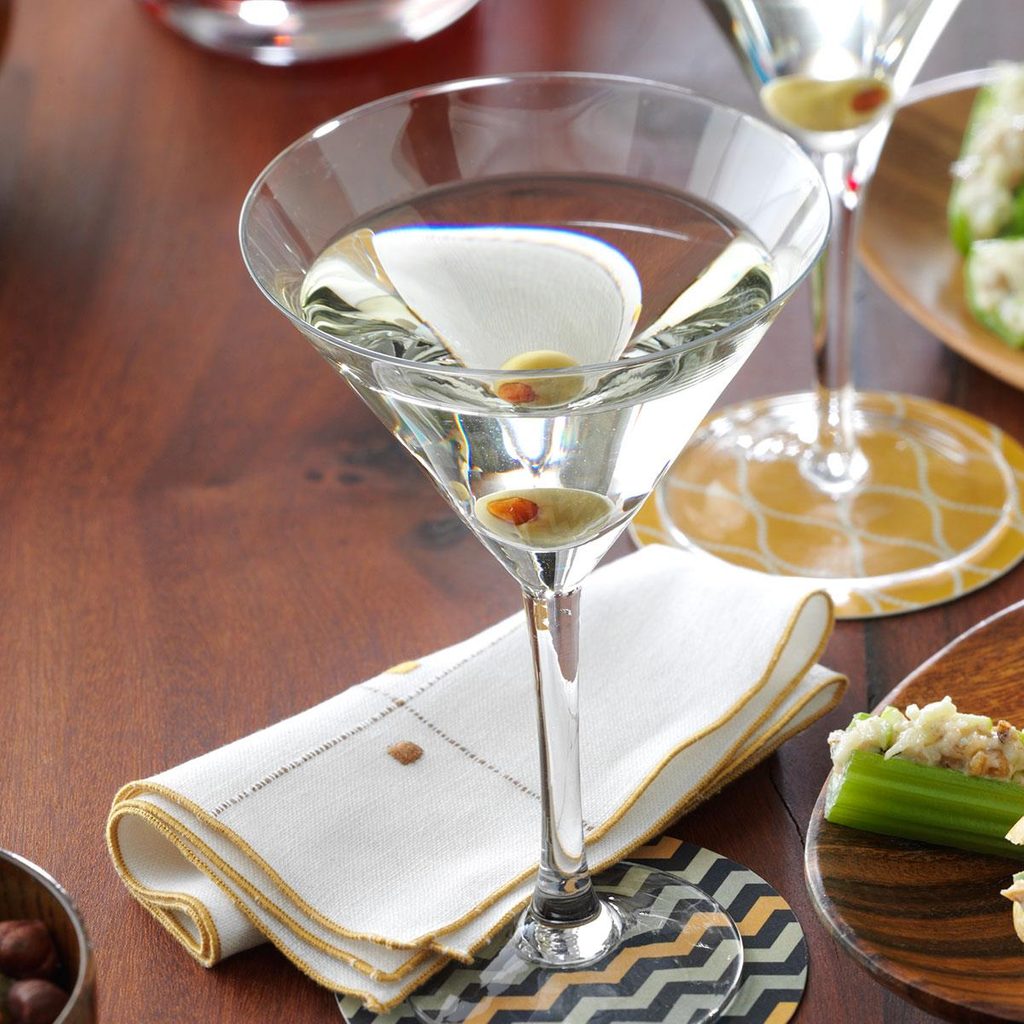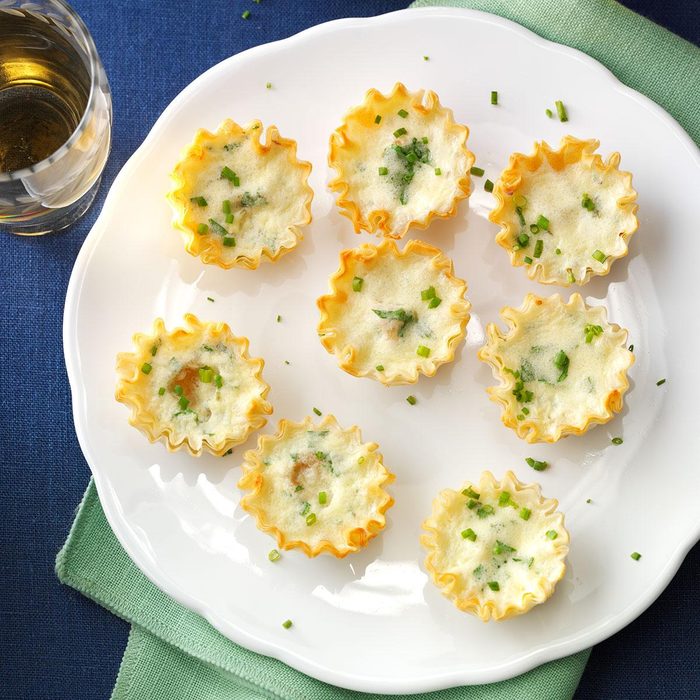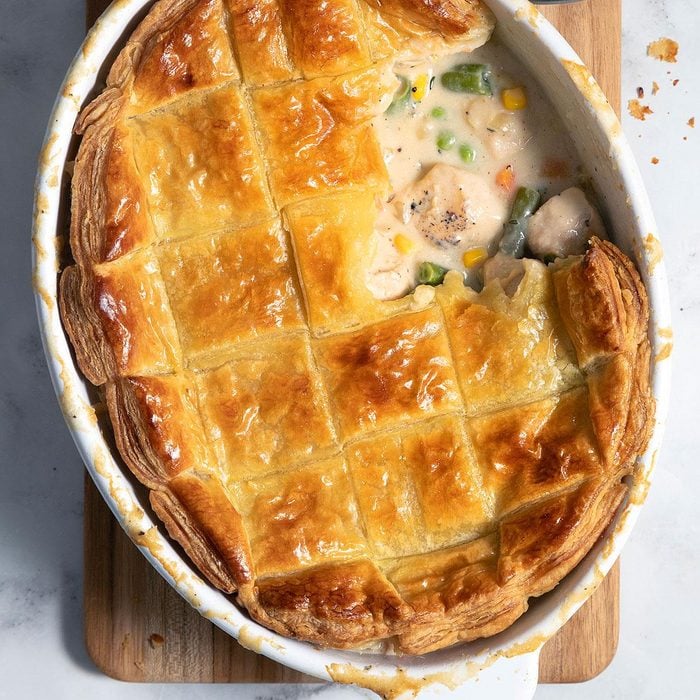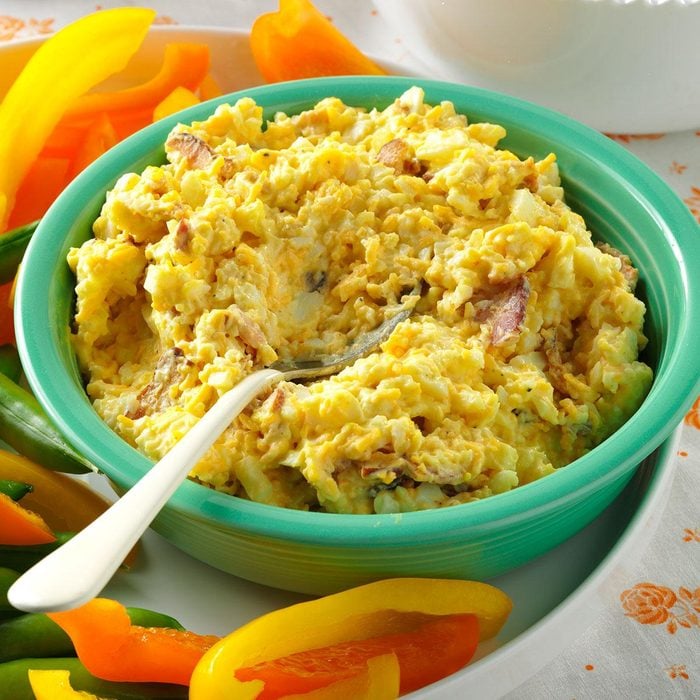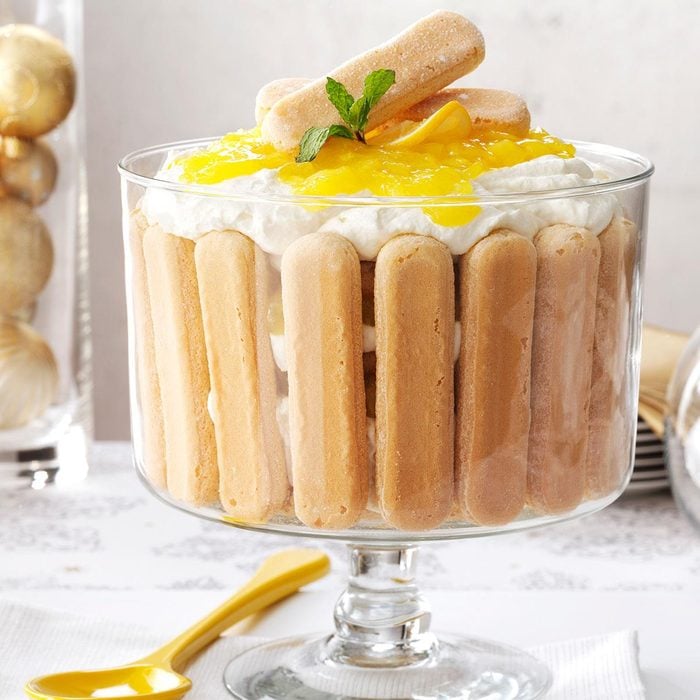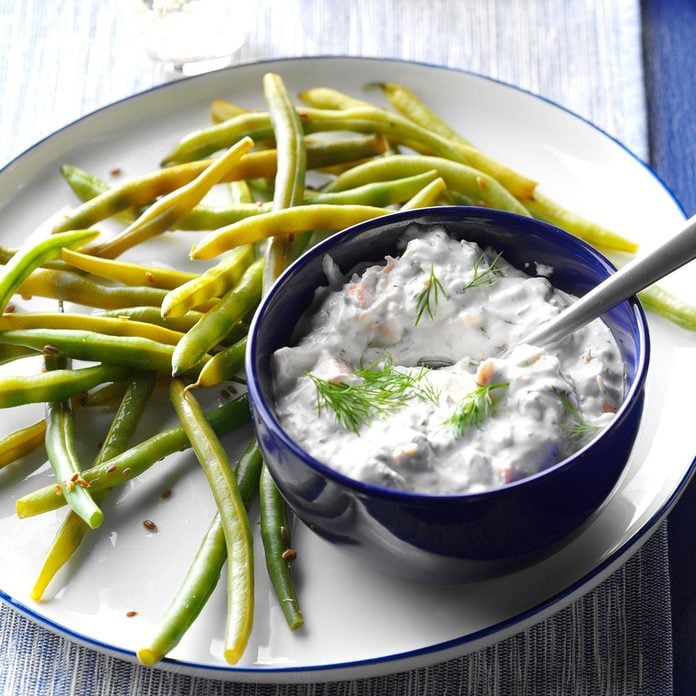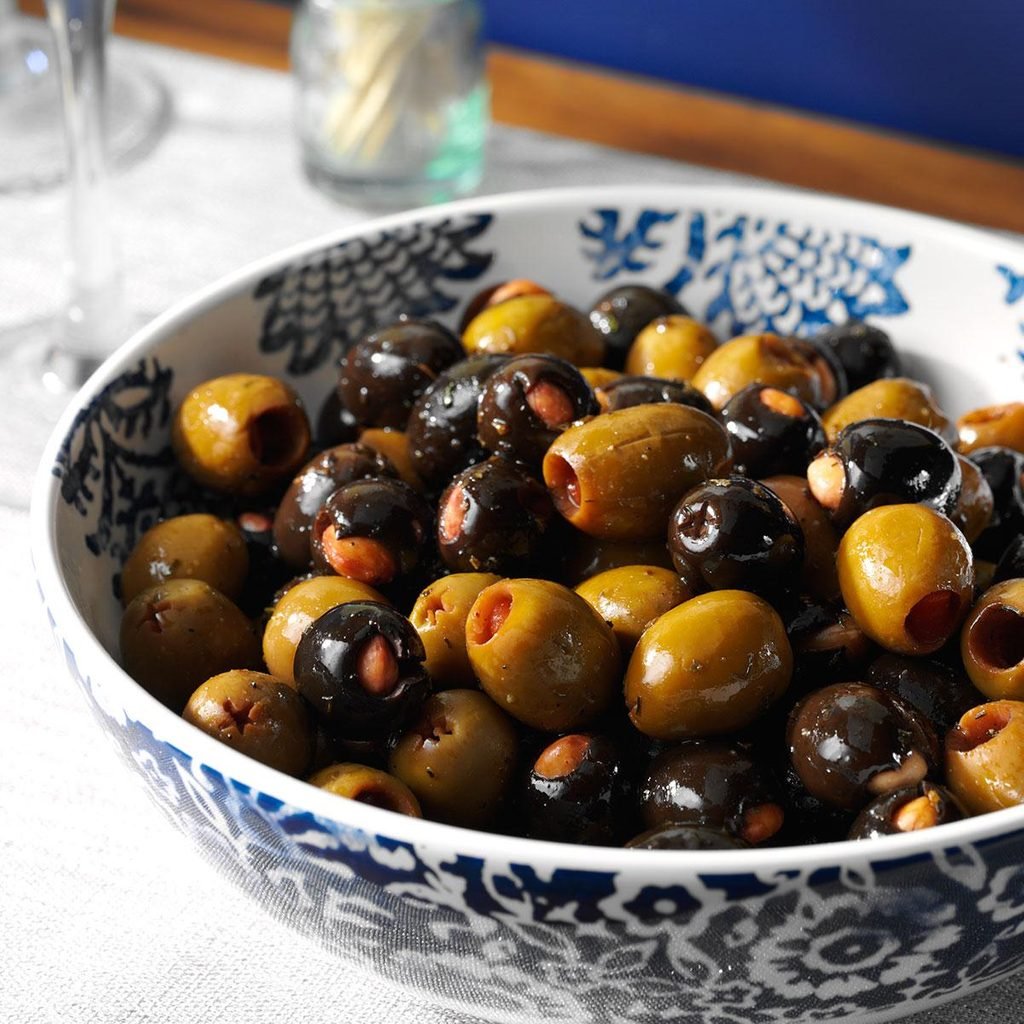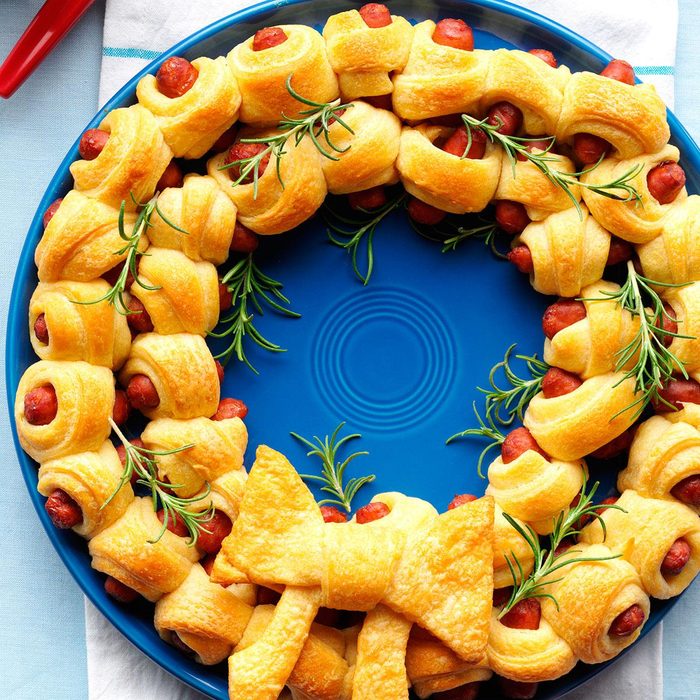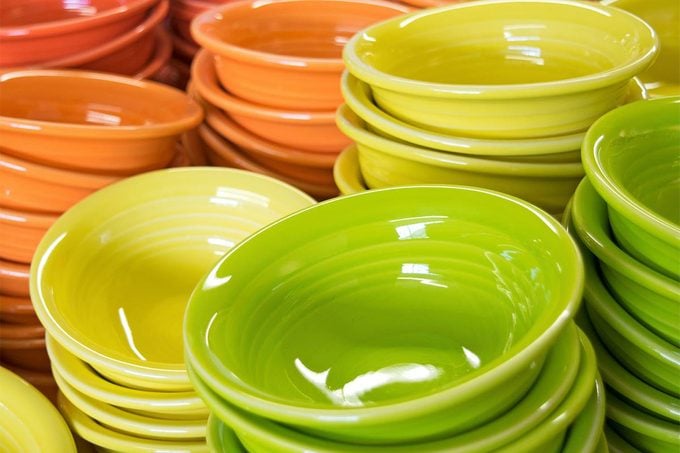 Fiestaware Dinnerware via Facebook
Fiestaware Dinnerware via Facebook
We’re loving all things retro! Whether it’s grape salad, scalloped potatoes or lemon chiffon cake, it’s hard to get enough. The only thing that might make our most-shared vintage recipes even better is an authentic vintage Fiesta dish.
Fiestaware is known for its bright colors and solid design, plus it was in every kitchen of the ’40s and ’50s. It’s now “the most collected brand of china in the United States.” (There are people absolutely obsessed with it!) The real vintage Fiesta pieces can be spendy to get your hands on, but if you’re lucky, your mother (or grandmother) may have passed her set down to you.
What Is My Fiesta Worth?
The individual plates and bowls can be bought or sold for roughly $40-50 each, with some of the more unique pieces fetching even nicer prices. But the serving pieces are in serious demand by collectors:
- Casserole Dish: $250-350
- Fruit Bowl: $425
- Salad Bowl: $525-600
- Cake Plate: $1600
- Gravy Boat: $85-95
- Relish Tray: $50
What your Fiesta might be worth depends on the decades of wear and tear, as well as the color. Turquoise and Yellow are relatively common, where as a piece in Red or Medium Green is definitely worth a premium. (How good would a Jell-O salad look on a brightly colored plate? Love!) You may not keep your Fiesta platters in the cupboard, but it’s never too late to check your attic to see what’s in storage. While you’re searching, here are eight more kitchen items worth more than you’d think.
Quick Fiesta History
Fiestaware was originally made in West Virginia. (USA!) It started appearing on family tables in 1936, and the pieces didn’t change much until 1969. The company did some redesigns in ‘69 and then stopped production in 1973. But in 1986, the company introduced a new Fiesta line, which you’ve likely seen at your local department store today!
How Do I Know If I Have Vintage Fiesta?
Color: The original colors were Red, Cobalt, Yellow, Light Green, Old Ivory, and Turquoise. 1950s colors included Gray, Rose, Chartreuse, and Forest Green. The last –and rarest–color is Medium Green.
Markings: The vintage items will have an inkstamp on the bottom that says GENUINE fiesta, with Fiesta all lowercase. Look for a mold marking, too. It might say something like Fiesta HLC USA or HLC Fiesta Made in USA. (Lots of variety!)
Glaze: The bottom of an old dish will be completely glazed, while a new Fiesta piece will show some un-colored clay.
Look here to see what your vintage Fiesta is worth to a collector. But we’ll be holding onto ours!
Psst: Your heirloom Pyrex might be worth a bundle, too.
Our Best Vintage Dinner Party Recipes
Salmon Mousse CupsI make these tempting little tarts frequently for parties. They disappear at an astonishing speed, so I usually double or triple the recipe. The salmon-cream cheese filling and flaky crust will melt in your mouth. —Fran Rowland, Phoenix, Arizona
Contest-Winning Chicken CacciatoreMy husband and I own and operate a busy farm. There are days when there's just no time left for cooking! It's really nice to be able to come into the house at night and smell this wonderful slow cooker chicken cacciatore. —Aggie Arnold-Norman, Liberty, Pennsylvania
Cucumber CanapesI always get requests for the recipe for these canapes whenever I serve them. They're delicate finger sandwiches with a creamy herb spread and festive red and green garnishes. —Nadine Whittaker, South Plymouth, Massachusetts
Mocha Baked AlaskasMake these baked Alaskas ahead of time—you can torch the completed desserts and freeze them up to 24 hours before serving. —Kerry Dingwall, Ponte Vedra, Florida
Seafood BisqueWe live on the Gulf Coast, where fresh seafood is plentiful. I adapted several recipes to come up with this rich bisque. It's great as a first course or an entree, and it can be made with just shrimp or crabmeat. —Pat Edwards, Dauphin Island, Alabama
Brandy Old-FashionedIn Wisconsin, we do things differently with this classic cocktail. Learn how to make a Badger State brandy old-fashioned to sip wherever you call home.
Skillet Pineapple Upside-Down CakeFor a change of pace, you can substitute fresh or frozen peach slices for the pineapple in this old-fashioned recipe. —Bernardine Melton, Paola, Kansas
Mexican Shrimp CocktailIt's up to you how to enjoy this cocktail—eat it with a spoon as a chilled soup, or use tortilla chips or crackers for scooping. —Erin Moreno, Arcadia, Wisconsin
Pina Colada Molded SaladMy gelatin ring gets a tropical twist from coconut, pineapple and macadamia nuts. It's a wonderful anytime treat. Now that I'm retired from teaching, I have more time for kitchen experiments. —Carol Gillespie, Chambersburg, Pennsylvania
Tuna Crescent RingThis is really easy to throw together, and I often use it when I am too tired to fix anything else. —Julia Bivens, Martinsburg, West Virginia
Marmalade-Glazed CarrotsThis side dish is ideal when you’d like to serve your vegetables in a different way for a special dinner. Cinnamon and nutmeg season baby carrots that are simmered with orange marmalade and brown sugar. —Barb Rudyk, Vermilion, Alberta
Funeral PotatoesDon't let the melancholy name fool you! Funeral potatoes are really just a cheesy potato casserole with cornflakes. The creamy texture, melty cheese and crunchy topping make this recipe the ultimate comfort food for any occasion.
Light & Lemony ScampiA touch more lemon helped me trim the calories in our favorite shrimp scampi recipe. For those who want to indulge, pass around the Parmesan. —Ann Sheehy, Lawrence, Massachusetts
Classic Cobb SaladMaking this salad is a lot like putting in a garden. I plant everything in nice, neat sections, just as I do with seedlings. —Patricia Kile, Elizabethtown, Pennsylvania
Moist Lemon Angel Cake RollTart and delicious, this pretty cake roll will tickle any lemon lover's fancy. Its feathery, angel food texture enhances its guilt-free goodness. —Taste of Home Test Kitchen
Dill & Chive PeasGrowing my own vegetables and herbs helps keep things fresh in the kitchen, but frozen peas make this side is a breeze to prepare. —Tanna Richard, Cedar Rapids, Iowa
Martini RecipeWhen making a cocktail as naked as a martini, every move counts. Here is how to make a martini recipe like a true bartender.
Bacon and Garlic Green BeansAdding white wine, lemon juice and garlic gives a little kick to green beans. It was enough to turn our old, traditional holiday side into a year-round favorite. —Shannon Reynoso, Bakersfield, California
Garlic-Herb Mini QuichesLooking for a wonderful way to impress guests? You’ve got it—and you need only five ingredients to make these tasty apps! —Josephine Piro, Easton, Pennsylvania
Puff Pastry Chicken PotpieCreate a puff pastry chicken potpie with store-bought puff pastry. The recipe is easier to make than classic pie crust versions of potpie, yet it still contains the rich, creamy chicken-and-vegetable filling we know and love.
Deviled Egg SpreadI tried this egg salad at a luncheon and had to have it. I punched it up with pickled banana peppers. It’s a hit with my kids and picky mother. —Lisa Easley, Longview, Texas
Caramelized Onion DipUpgrade your caramelized onion dip from store-bought to (easy) homemade with this creamy, savory-sweet offering, the ideal vehicle for salty chips and fresh veggies.
Sage Chicken Cordon BleuIt's nice to surprise the family with special meals like this during the week. I usually double the recipe so we can enjoy leftovers the next day. —Martha Stine, Johnstown, Pennsylvania
Italian Pineapple TrifleMy grandmother made this rich, tempting trifle every year for our family’s Christmas Eve celebrations. Now I make it to carry on her special tradition. It’s an easy, delicious no-bake dessert everyone will love. —Ann-Marie Milano, Milton, Massachusetts
Lobster alla DiavolaI’ve cooked lobster alla diavola (devil’s style) since I was first married. We serve lobster at family celebrations, usually with linguine or capellini. —Marcia Whitney, Gainesville, Florida
Pickled Green Beans with Smoked Salmon DipI came up with this appetizer for my son, who's big on delicious but healthy food. The lighter beans-and-dip combo has won over even finicky eaters. —Dinah Halterman, Harmony, North Carolina
Marinated Almond-Stuffed OlivesMarinated stuffed olives go over so well with company that I try to keep a batch of them in the fridge at all times. —Larissa Delk, Columbia, Tennessee
Pigs in a Blanket WreathIs there anything more charming than this pigs in a blanket wreath? Garnished with rosemary sprigs and a crescent dough bow, this buttery, sausage-filled wreath is a perfectly festive appetizer for the holidays.





















